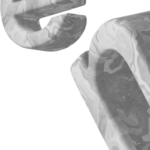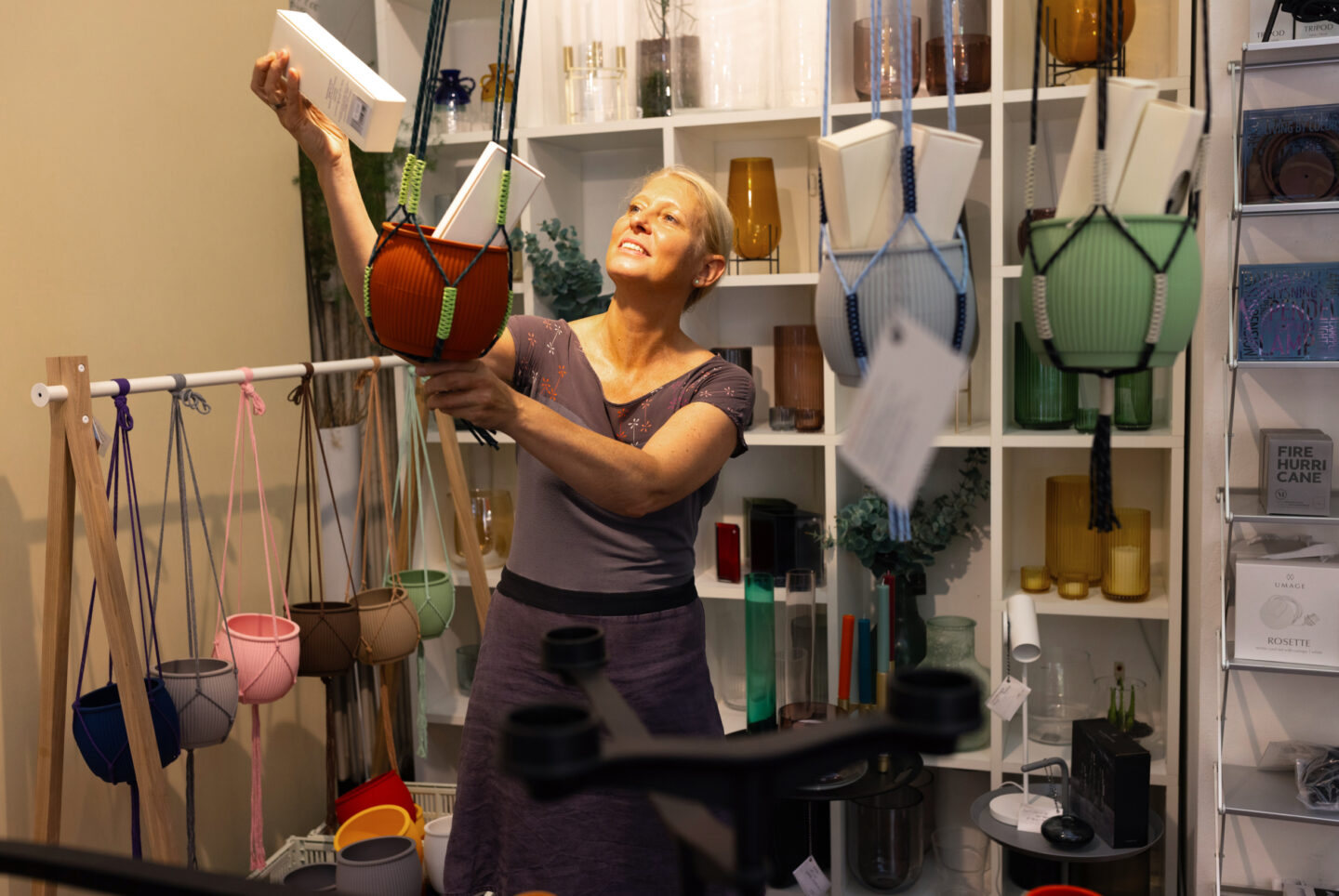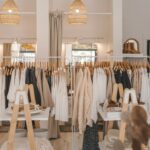

Set up your shop
Promote my shop

Visual Merchandising for Your Store: Design Tips for Your Retail Shop
11 March 2024
Visual merchandising is an extension of your brand image and is important for attracting and engaging customers, both online and at physical locations. It encompasses practices related to optimising the presentation of your products and services. Effective visual merchandising will help draw clients to your store and entice them into making purchases.
Find out how to align your visual identity with your target market and the best practices and visual merchandising techniques you can implement to improve sales.
Understanding Your Target Audience
Visual merchandising is all about creating an attractive environment and store design for your products and services. But in order to attract the right clientele, it’s important to know your target audience.
Think about a store selling urban streetwear and skateboards. It wouldn’t make sense to decorate your retail space with neutral beige tones, bouquets of flowers, or even department store racks loaded with decks and wheels. You’ll have more success appealing to an urban style: bright colours and graffiti, showcasing decks or clothes on the walls and leaving room for your clients to test a new board.
Of course, finding the right style to appeal to your target audience may require in-depth market research. If you’re looking for some tips about how to carry out primary market research, competition analysis, or want to learn where to find reliable secondary sources, visit our article on conducting market research.
Creating a Consistent Brand Image
Your brand image doesn’t start and stop at your doors. Few retailers exist today without some online presence, whether on social media apps or even an e-commerce storefront. So, your visual merchandising doesn’t stop at your doors either.
It’s important to maintain a cohesive brand image across all platforms. Without a cohesive brand image, it can get very confusing to potential customers whether your online presence is really related to the physical location, even if they share a name.
Outside of just the logo, maintaining a coherent image means using the same imagery, design, fonts, and colours in both the physical and digital world.
Eye-Catching Window Displays
For a physical retailer, visual merchandising begins before the customer sets foot in your store. Your role is to entice them to make that first step, and that means creating attractive window displays that draw the eye to your products.
Window displays are a place where you can let your design creativity loose. They reflect your brand and tell your story all while pushing your hottest new collections or special items that will rouse curiosity. Whatever you plan to highlight, there are simple rules to follow to ensure maximum effectiveness.
- Keep the star products at eye level. These are the focal points, the first thing clients will look at before allowing their eyes to travel across the display, so make use of this space.
- Use a symmetrical (pyramid), semi-symmetrical (half-pyramid), repetitive (groups of 3), or alternating pattern. These are the four primary layouts for your displays that attract the most interest. Don’t just place items haphazardly.
- Tell your story through signage, products, dressing, or with a QR code that links to a particularly interesting page. You can invite customers to visit your Instagram page or interact with the display to create their own Instagram posts. Draw your clients into your world and tell them who you are.
- Change your window display regularly. Change the products and theme at least monthly. This will keep your retail shop looking fresh and help maintain interest.
Seasonal and Promotional Displays
Update your design with the holidays or any special promotions you run. That means adapting lighting, colours, props, and themes: bright colours for spring and summer, fall reds and oranges, little hearts for Valentines… You can also use the holidays as a way to change up your store layout, bringing together seasonal items that could incite more cross sales.
Don’t neglect your online store. Tying in seasonal elements in-store and online only helps create a more harmonious brand image. Use the same visual elements on your website and physical signage.
Retail Store Layout and Traffic Flow
Your window display should then lead naturally into the rest of the store. Part of visual merchandising is how you present the products, which means laying out your store in a way that will drive customers to make purchases.
Think about your layout in four tiers.
- The hotspot. This is an extension of your window display where you’ll showcase the displayed items with any accessories. Set it back from the entry to have an open, breathable space and draw customers into the store.
- Next, stock your push products including new collections or anything you are currently trying to push.
- Then, your core products. These can be regular collections or whatever comprises your core business.
- Finally, have your pull products. The back of the store is always the quietest zone, meaning it’s harder to convince shoppers to visit. Stocking the products or services that are most likely to pull clients off the street at the back of the shop means they will have to traverse the whole shop and hopefully find other items of interest along the way.
Setting up Your Merchandise
Keep this general layout in mind when you set up your merchandise for the first time. A lot is going to depend on both how large your retail space is as well as the types of products you sell. Generally, you want to avoid a claustrophobic setting as much as possible, and that means leaving plenty of room for customers to move about freely.
For furniture, you’ll generally want to create a free-flowing layout where the merchandise is distributed in a way that allows freedom of movement and vision across a maximum amount of space. For greengrocers, you can create a loop or a grid layout that allows you to maximise the shelf space for your merchandise and lead customers from produce to dairy to meats and fish, etc.
Next, you’ll want to run a customer flow exercise to see how people interact with your space. In a customer flow exercise, you’ll choose a handful of shoppers to follow around during their visit. Keep a map of the store on hand and note the path the shoppers follow, where people stop to look at displays and merchandise, and where they make a purchase. It helps to colour-code each of the shoppers differently and each interaction differently.After watching just a few people interact with your retail space, you should start to notice a pattern. If you want to learn more about how to carry out a customer flow exercise or need tips on how to dress your windows or layout your retail store, we’ve created some fantastic tutorials to help you get started.
Effective Use of Signage
If the pull products are in the back of the shop, you need to convey where to find them. If a customer enters and can’t find what they’re looking for immediately, they may just turn around and leave. Thus, having clear signage is critical.
There is more to signage than just informing clients where to find certain products. Signage in visual merchandising should also communicate messages, promotions, and other essential information. Reinforce your brand image with matching colours, designs, forms, and font.
Lighting to Enhance Ambiance
Don’t overlook the importance of lighting as it has a huge emotional impact. You can use light, colour, and even shadow to evoke a specific feeling or to draw eyes to a particular product.
If you sell household goods, a warm light can create a feeling of comfort and peace, just what you want to help your customers imagine these products in the cosy cocoon of their home. However, if you sell tech, like phones or computers, think about bright, colder lighting and backlit LEDs that feel more modern or exciting. The intensity can evoke a heightened emotional state.
Incorporating Digital Elements for Online Stores
Online stores come with different challenges, but the same rules apply. Customer experience is king. The layout of your page is like the layout of your store: the window is the first thing a physical client sees; its digital equivalent is your homepage banner.
Make sure your homepage is interesting, with high quality images that follow the same rules as an attractive display: symmetrical, semi-symmetrical, repetitive, or alternating. Then, highlight your push products, and have your pull products lead customers through the entire page.
Use high-quality videos and attractive calls to action that will increase interaction and create an emotional appeal.
Measuring and Adapting Your Visual Merchandising Strategy
Monitor how things progress over time. For example, run a customer flow exercise, where you keep track of a handful of clients to see where they stop to look or make purchases. After adjusting your product placement or the flow of your aisles, wait a while then run another exercise to see what, if anything, changes.
Similarly, analytics on your online page will help you see traffic coming in, what keywords led them to your site, how they navigated between pages, and how long they spent browsing. This can give you an idea of how to improve your customers’ shopping experience and which products are driving traffic.
Conversion rates are a great way to see what’s working. Stay adaptable and don’t be afraid to try something new!
Your visual merchandising defines how your clients perceive your business. It enables you to tell your story, show who you are, and make your store stand out. Think about the message you want to portray and implement the visual merchandising tips we’ve gone over in this article and in the visual merchandising tutorials available on Ankorstart to give yourself the best chance at a successful retail venture.
FAQs
How do I construct an attractive window display?
Window displays are the first things physical customers see, so create an atmosphere that is inviting and tells your story. Use lighting and colours to draw attention and tie in to the products or seasonal display. Keep your star product at eye level. This is the focal point where customers will begin the visual journey around your display.
What are the four layouts to use in window displays?
Your design should use a symmetrical (pyramidal), semi-symmetrical (half-pyramidal), repetitive design (a rule of three or odd numbers work best), or alternating design for best effect.
What elements help maintain a consistent brand image?
To maintain a harmonious on- and offline presence use similar signage, fonts, colours, and obviously your logo. It’s important to ensure that your client is able to instantly recognise you. Update your window displays regularly for new promotions and seasons, and don’t hesitate to update your homepage to keep the visual merchandising consistent.
Why is visual merchandising so important?
Visual merchandising is the practice of enticing customers to make purchases. You need to ensure your retail space is inviting and speaks directly to your target customers. From lighting to layout, everything matters. Tell your story and help your customers get to understand you and your brand better.
Related posts "Promote my shop"

For entrepreneurs opening a shop, designing a compelling brand identity is crucial to stand out from the competition.
This article explores how thoughtful product selection, marketing strategy and customer experience can boost sales and strengthen brand image.

Customer loyalty is crucial to the success of your store. Discover 5 techniques for developing an effective customer loyalty strategy before opening your shop: an engaging online presence, a pre-launch program, strategic partnerships, customer reviews and an attractive loyalty program. Lay the foundations for a lasting relationship with your customers right from the start of your entrepreneurial adventure.

The opening of a new store is a key to attract customers to your store from the start of your business. Discover 7 ideas for creating buzz around your opening. This article will guide you in creating a memorable event to capture the attention of your target audience. Read on to make your grand opening a success.

As a new retailer, it is good to start thinking about customer loyalty programmes early. There are many different rewards programmes in use today, so take the time to think about what fits best with your clients and how to make your system a success.


